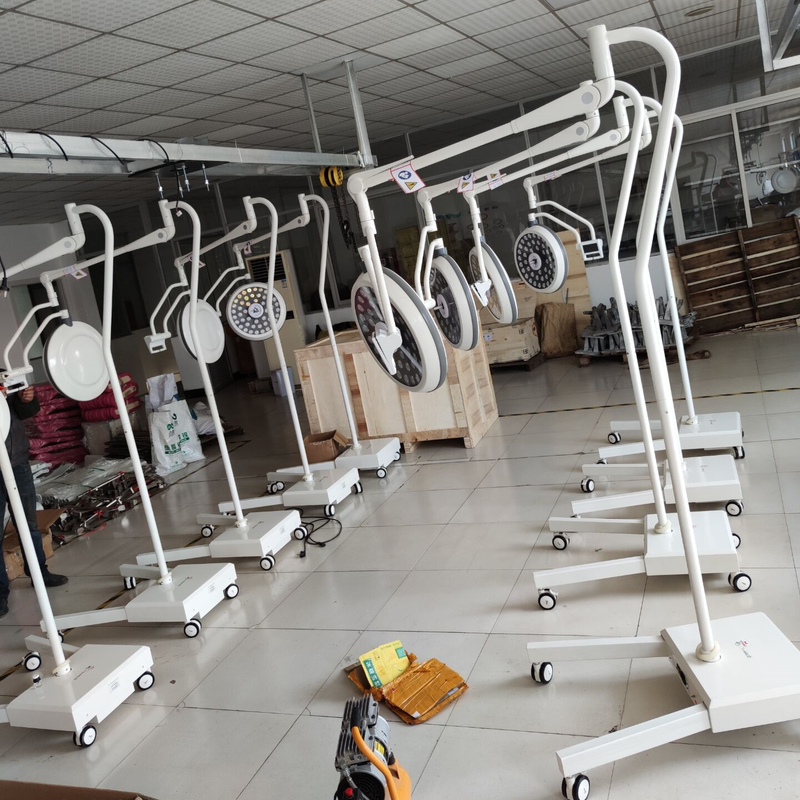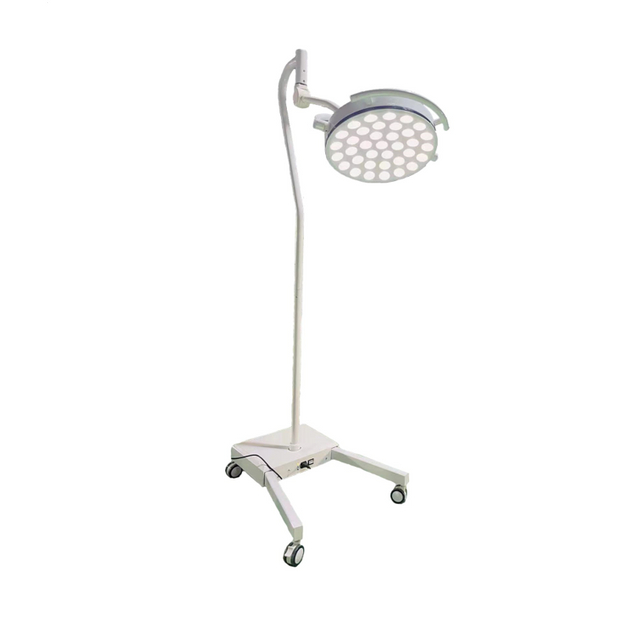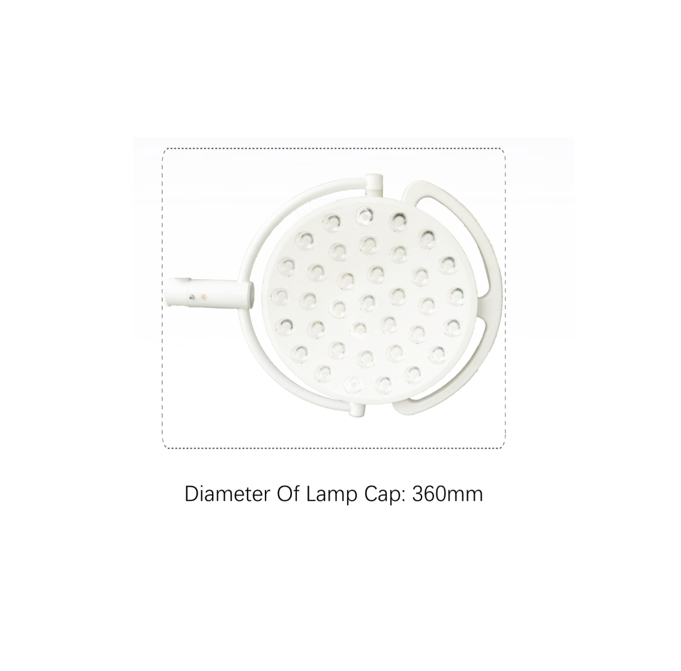- All
- Product Name
- Product Keyword
- Product Model
- Product Summary
- Product Description
- Multi Field Search
Views: 0 Author: Site Editor Publish Time: 2025-04-22 Origin: Site









Have you ever wondered what makes surgery more precise and safer? One critical factor is surgical lights. These lights ensure that surgeons can see clearly, even in the most delicate procedures.
In this article, we’ll explore why surgical lights are so important and how they improve surgical outcomes.
Surgical lights are specialized lighting systems designed for use in operating rooms, providing bright and shadow-free illumination to the surgical field. They are typically mounted on the ceiling, walls, or even used as headlamps, and their purpose is to allow the surgical team to see the patient's body clearly while performing the procedure. The lights used in surgery are specifically designed to cater to the needs of surgeons, including the ability to adjust brightness, manage temperature, and reduce glare to ensure comfort for the medical staff.
In the world of surgery, precision is paramount. Any slight mistake can lead to complications, extended recovery times, and even fatal consequences. Surgical lights help mitigate these risks by ensuring that the surgical site is illuminated to the highest standard. Below, we’ll discuss the primary reasons why surgical lights are so significant in surgery.
The most obvious reason why surgical lights are important is that they provide surgeons with the necessary illumination to see the surgical site clearly. This clarity allows them to distinguish between tissues, organs, and other critical anatomical features that are essential during the operation. Without proper lighting, the risk of misjudging a critical step or damaging healthy tissue can increase dramatically.
The precision offered by surgical lights ensures that surgeons can perform intricate tasks with accuracy, reducing the chance of errors. This is especially true in high-risk surgeries, where even the smallest mistake can result in significant complications for the patient.
Clear visibility provided by surgical lights helps minimize the risk of accidental damage to surrounding tissues or structures during surgery. Accidental injuries, especially those affecting vital organs, can lead to severe complications, including excessive bleeding, infection, or even death.
By enabling surgeons to see exactly what they are doing, surgical lights help reduce the need for excessive force or incorrect handling of instruments. This is particularly important in delicate surgeries such as neurosurgery or ophthalmic procedures, where precision is essential.

With better lighting, surgeons can work more efficiently. Since there is no need to constantly adjust lighting or maneuver around poor visibility, operations tend to be quicker and more effective. This not only saves time but also reduces the amount of stress and fatigue experienced by the surgical team.
Additionally, better lighting conditions help the entire medical team function more smoothly. It allows nurses and assistants to provide the necessary support without the distraction of constantly adjusting the lights.
One of the unique features of surgical lights is that they are designed to manage the heat they produce. Traditional lighting sources, like incandescent bulbs, emit significant amounts of heat, which can be uncomfortable for both the surgical team and the patient. Modern surgical lights, especially LED lights, are designed to reduce heat emissions, ensuring a more comfortable working environment.
Surgical lights are carefully designed to minimize shadows, which can obstruct visibility during surgery. Shadows can arise from the positions of the surgeon, instruments, or even the patient's body, making it difficult to get a clear view of the area being worked on. High-quality surgical lights use a combination of light positioning and diffusers to ensure even and bright illumination without creating disruptive shadows. This feature is vital for the success of the procedure, as shadows can lead to missed details that might affect the outcome of the surgery.
Over the years, surgical lighting has undergone significant advancements, with the introduction of new technologies aimed at improving performance, efficiency, and the overall surgical experience. One of the most notable advancements has been the development of LED surgical lights. These lights offer many advantages over traditional lighting systems, including superior brightness, lower heat output, and longer lifespan.
Additionally, modern surgical lights come equipped with features like adjustable color temperature, dimming options, and customizable light spot sizes. These capabilities ensure that the lighting can be tailored to the specific needs of the surgeon and the procedure at hand.
Surgical lights are not just for human surgeries; they are also critical in veterinary surgeries. Veterinary surgical lights are designed to meet the specific needs of veterinarians performing delicate surgeries on animals. These lights provide the same level of brightness and precision required in human surgeries, ensuring that veterinarians can perform complex procedures with confidence. The importance of proper illumination in veterinary surgeries cannot be overstated, as it is essential for ensuring the well-being of animals undergoing surgery.

Sterility is a key concern in the operating room, as infections can lead to severe complications and even death. Surgical lights themselves are not sterile, but the area around the light can be cleaned and disinfected to reduce the risk of contamination. In fact, many modern surgical lights come with antimicrobial coatings to further help maintain a sterile environment. The light handles and other touchable components are typically covered with sterile disposable covers to ensure that they do not compromise the sterile field during surgery.
Surgical lights are incredibly bright, as they need to illuminate the surgical site with a high level of intensity to ensure clarity and precision. The brightness of surgical lights is typically measured in lux, with high-end surgical lights offering brightness levels that can exceed 160,000 lux. To put this into perspective, the average brightness of a well-lit office is around 500 lux, making surgical lights significantly brighter. This brightness is essential for seeing fine details, particularly in deep or narrow cavities.
Modern surgical lights, especially LEDs, are designed to operate at a lower temperature compared to older halogen lamps. While halogen lights can become extremely hot, LED lights generate very little heat, which is beneficial for both the patient and the surgical team. The lower temperature of LED lights reduces the risk of burns or discomfort during prolonged surgeries, making them the preferred choice in operating rooms worldwide.

Surgical lights, as we know them today, have evolved over many years. The first surgical light was introduced in the early 20th century, with significant contributions from physicians and engineers. One of the early pioneers was Dr. Harvey Cushing, a renowned neurosurgeon, who is often credited with improving the lighting in the operating room during his surgeries. The invention and development of modern surgical lighting systems have since been driven by the need for clearer, more reliable lighting during complex surgical procedures.
When selecting surgical lights, there are several factors to consider. The type of surgery being performed, the size of the operating room, and the preferences of the surgical team all play a role in determining the best lighting system. It is also important to consider the longevity, energy efficiency, and heat management capabilities of the light, as these factors will affect both performance and comfort during procedures.
Surgical lights are crucial for precision, safety, and efficiency in the operating room. Whether in human or veterinary surgeries, these lights make a significant difference. If you're looking for top-quality surgical lighting systems, visit us for more details on how we can help enhance your medical facility's lighting needs.
Q: How long do surgical lights last?
A: Surgical lights typically last between 40,000 to 60,000 hours, depending on the type and quality of the light.
Q: Are surgical lights safe to use?
A: Yes, modern surgical lights are designed with safety in mind, including features like heat management and shadow control to reduce risks.
Q: What is the difference between halogen and LED surgical lights?
A: LED surgical lights are more energy-efficient, produce less heat, and have a longer lifespan compared to halogen lights.
Q: Can surgical lights be used for veterinary surgeries?
A: Yes, veterinary surgical lights are designed to provide the same level of precision and brightness needed in human surgeries.